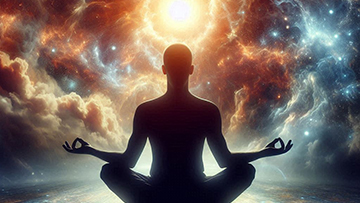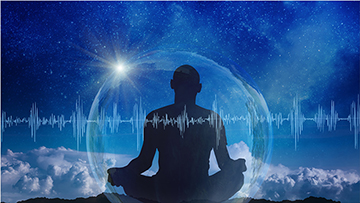Exceptional Meditation Locations
A Journey to Inner Harmony:
In the pursuit of inner peace, meditation serves as a powerful tool to guide us toward harmony within ourselves. However, the journey to inner harmony is not just about finding the perfect external environment; it’s about connecting deeply with our inner being and recognizing the unity between our internal world and the world around us. Here’s how to embark on this journey and discover the exceptional meditation locations that can help you connect with your true self.
1. How to Search for Inner Harmony
Searching for inner harmony begins with a willingness to look within. It requires us to quiet the external noise and focus on the subtle whispers of our inner self. Meditation is the gateway to this introspective journey, where we can explore our thoughts, emotions, and the essence of who we are. To search for inner harmony, it’s important to create a space, whether physical or mental, where you can reflect without judgment. Start by sitting in a comfortable position, breathing deeply, and allowing your thoughts to settle. As you meditate, gently guide your focus to the sensations within your body, the rhythm of your breath, and the quiet space of your mind. In this stillness, you may begin to uncover the harmony that lies beneath the surface, waiting to be discovered.
2. The Inner Being is Reflected in the Outside World
What we carry within us is often mirrored in the world around us. Our inner state of being—whether it is peace, joy, or turmoil—can shape how we perceive and interact with our external environment. When we cultivate inner harmony through meditation, we begin to notice a shift in our external reality. The world seems more vibrant, interactions with others become more meaningful, and challenges appear less daunting. This reflection of the inner self in the outside world highlights the interconnectedness of all things. By nurturing a peaceful and harmonious inner being, we naturally create a more balanced and harmonious external life. The spaces we choose for meditation, therefore, should not just be visually pleasing, but also resonate with the peace we seek to cultivate within.
3. There is No Inner and Outer; All is You
One of the profound realizations on the path to inner harmony is the understanding that the distinction between inner and outer is an illusion. In truth, all that you experience is a reflection of your consciousness. The separation between you and the world around you dissolves when you recognize that everything is a part of your being. Whether you are meditating in a quiet forest, a busy city, or the comfort of your home, the space is merely an extension of you. This realization allows you to find peace and harmony anywhere, as you understand that the environment is a mirror of your internal state. By embracing this unity, you can transcend the duality of inner and outer, finding a sense of wholeness and completeness in every moment.
4. No Matter the Space, Whether Good or Bad, the Point is “Can You Accept Yourself?”
The true essence of inner harmony lies in self-acceptance. No matter where you are—whether in a tranquil sanctuary or a chaotic environment—the key question is: Can you accept yourself as you are? The external space, whether good or bad, becomes irrelevant when you are at peace with yourself. Meditation teaches us to sit with our thoughts, emotions, and imperfections without judgment. It encourages us to embrace all aspects of ourselves—the light and the shadow—with compassion and understanding. When you can fully accept yourself, the space around you transforms into a place of harmony, regardless of its external conditions. This acceptance is the foundation of inner harmony, allowing you to carry peace with you wherever you go.
5. The Power of Presence in Any Environment
One of the most transformative aspects of meditation is its ability to cultivate presence—the art of being fully engaged in the current moment. Whether you’re surrounded by the serene beauty of nature or the hustle and bustle of urban life, the key to finding inner harmony lies in your ability to be present. Meditation teaches us to anchor our awareness in the here and now, allowing us to experience life more fully and deeply. By bringing mindfulness to your surroundings, you can turn any environment into an exceptional meditation location. The sound of traffic becomes a rhythmic backdrop, the movement of people a reminder of life’s dynamic flow. Presence transforms even the most ordinary space into a sacred one, where inner harmony can be accessed at any time.
6. Embracing Imperfection in Your Surroundings
Often, we seek out perfect, peaceful environments for meditation, believing that tranquility can only be found in idyllic settings. However, true inner harmony comes from embracing the imperfections around us and finding peace within them. Whether it’s the clutter in your room, the noise from a neighbor, or the unpredictability of weather, these so-called imperfections offer opportunities for growth and acceptance. By meditating in less-than-perfect surroundings, you challenge yourself to find calm and centeredness regardless of external conditions. This practice strengthens your ability to maintain inner harmony in the face of life’s inevitable ups and downs, reminding you that peace is not found in perfection but in your acceptance of what is.
7. Creating Personal Rituals for Meditation
To deepen your connection with any meditation location, consider creating personal rituals that make the space uniquely yours. Whether it’s lighting a candle, playing soft music, or simply taking a few deep breaths before you begin, these rituals can help you transition into a meditative state more easily. Personal rituals bring intention and focus to your practice, enhancing the sense of sacredness in your chosen environment. Over time, these small acts become powerful triggers for relaxation and mindfulness, transforming even a familiar space into an exceptional meditation location. The ritual itself becomes a bridge between your inner world and the external environment, anchoring you in the present moment and preparing you for the journey within.
8. Finding Harmony in Shared Spaces
While meditation is often seen as a solitary practice, finding harmony in shared spaces can also be deeply rewarding. Whether you’re meditating in a group, a communal garden, or a family living room, the energy of others can enhance your experience. Shared spaces remind us of our connection to the wider world and the collective nature of our existence. Meditating in these environments can help you cultivate a sense of unity and compassion, both for yourself and those around you. The shared energy can create a powerful atmosphere, amplifying your sense of inner harmony. By embracing the presence of others, you turn a communal space into an exceptional location for deep, collective meditation.
9. Traveling with Your Meditation Practice
For those who travel frequently, finding a consistent meditation location can be challenging. However, the ability to meditate anywhere is a testament to the power of your inner practice. Whether you’re in a hotel room, an airport lounge, or a foreign city, each new environment offers a unique opportunity to explore inner harmony. Traveling with your meditation practice teaches you adaptability and resilience, as you learn to find peace and stillness in unfamiliar surroundings. Every location becomes exceptional when you approach it with an open heart and a calm mind. The journey itself becomes a meditation, as you carry your practice with you, discovering new facets of inner harmony wherever you go.
10. The Ultimate Meditation Location: Within
At the end of the day, the most exceptional meditation location is not a physical place, but the space within you. Your inner sanctuary is always accessible, no matter where you are. By cultivating a strong inner practice, you can find harmony and peace in any external environment. This inner location is where you return to reconnect with your true self, find clarity, and renew your sense of purpose. It is a space that transcends time and place, offering refuge and strength whenever you need it. The journey to inner harmony ultimately leads you to this sacred inner location, where true peace and contentment reside.
In conclusion, exceptional meditation locations are not defined by their physical beauty or tranquility but by the inner harmony they help you cultivate. Whether you are in a serene garden, a bustling city, or your own living room, the true power of meditation lies in its ability to connect you with your inner self, reflect your inner state in the world around you, and ultimately guide you to a place of self-acceptance and unity. As you continue on this journey, remember that the most exceptional meditation location is the one where you can find peace within yourself.